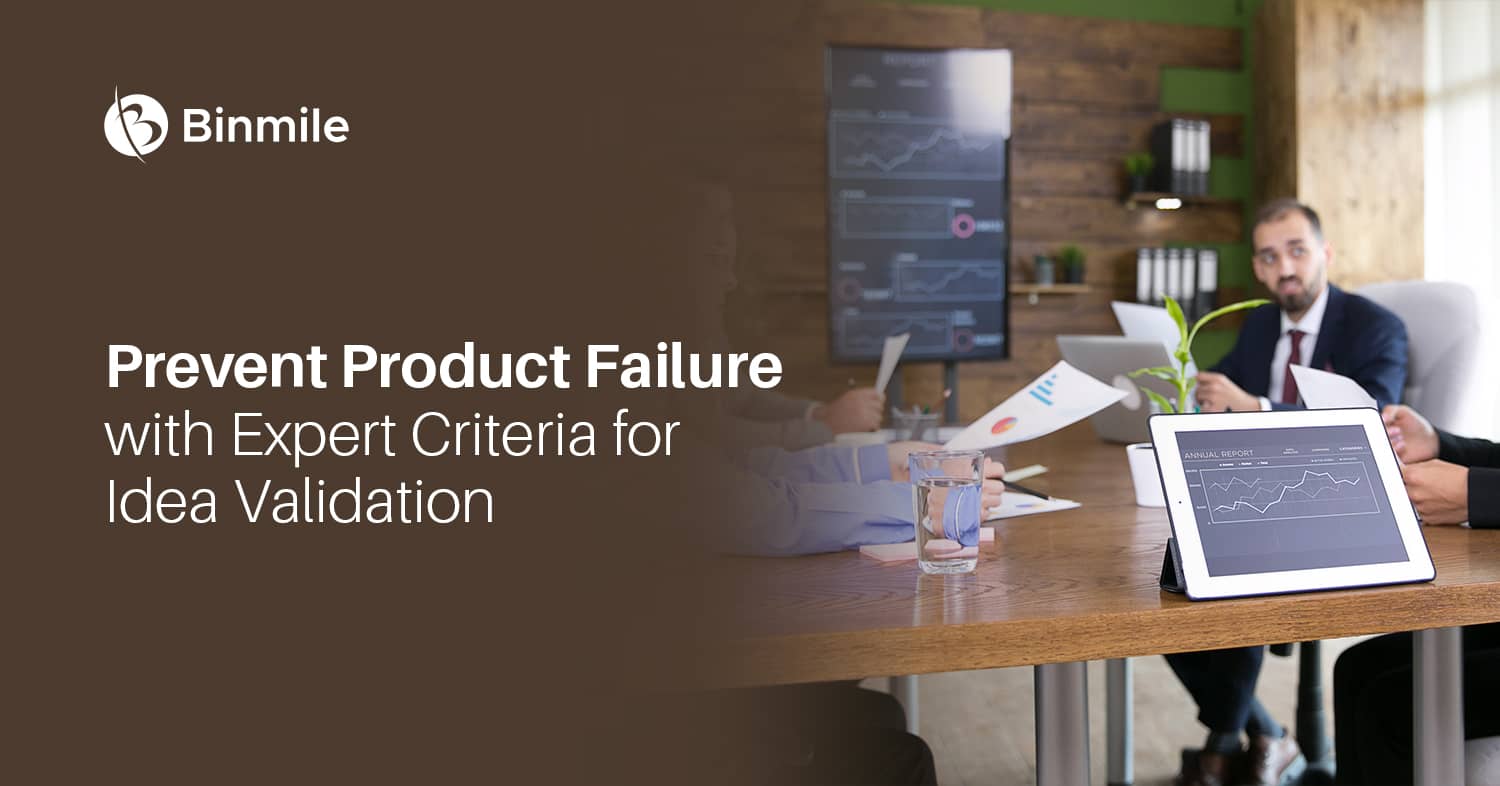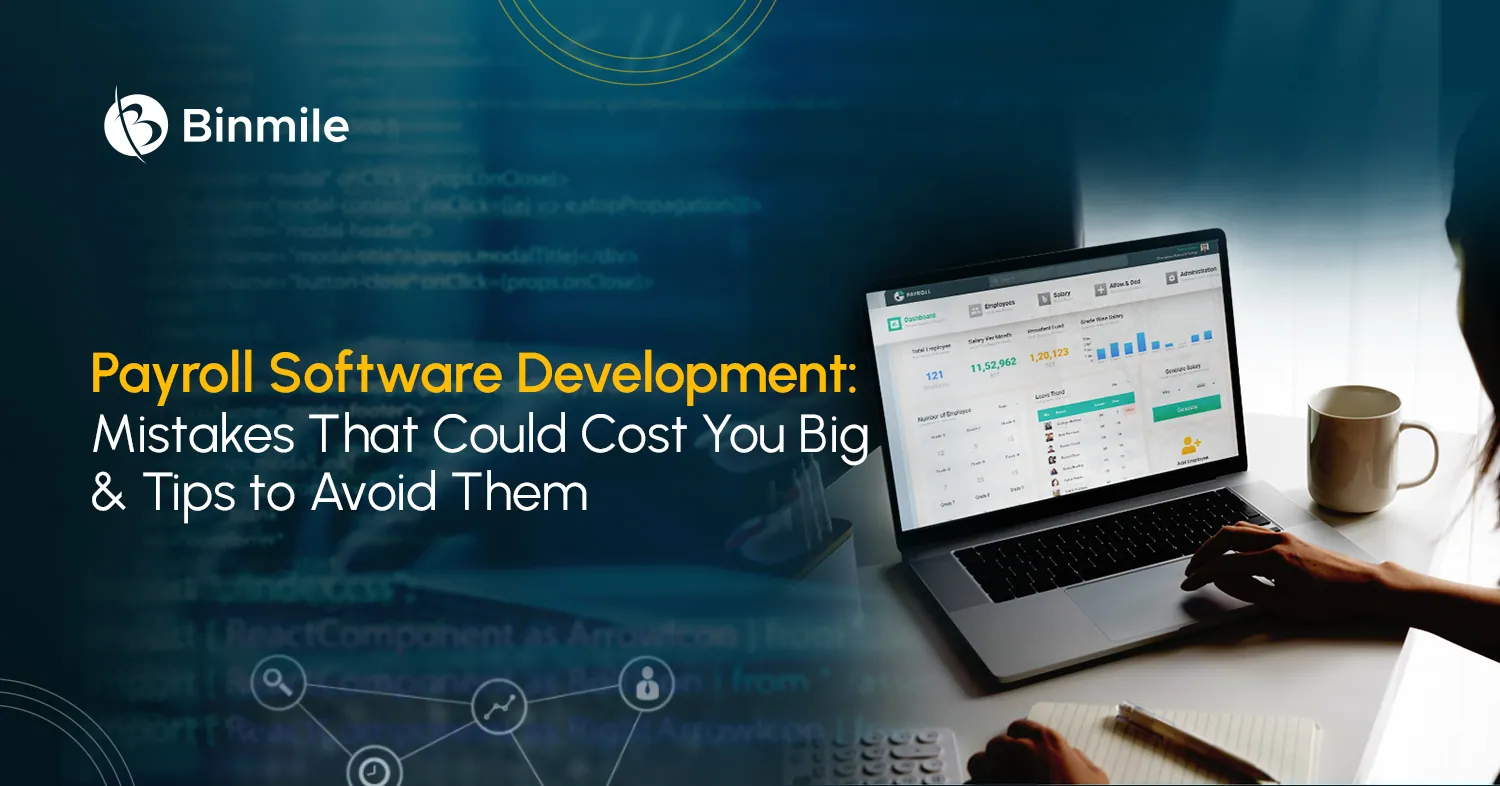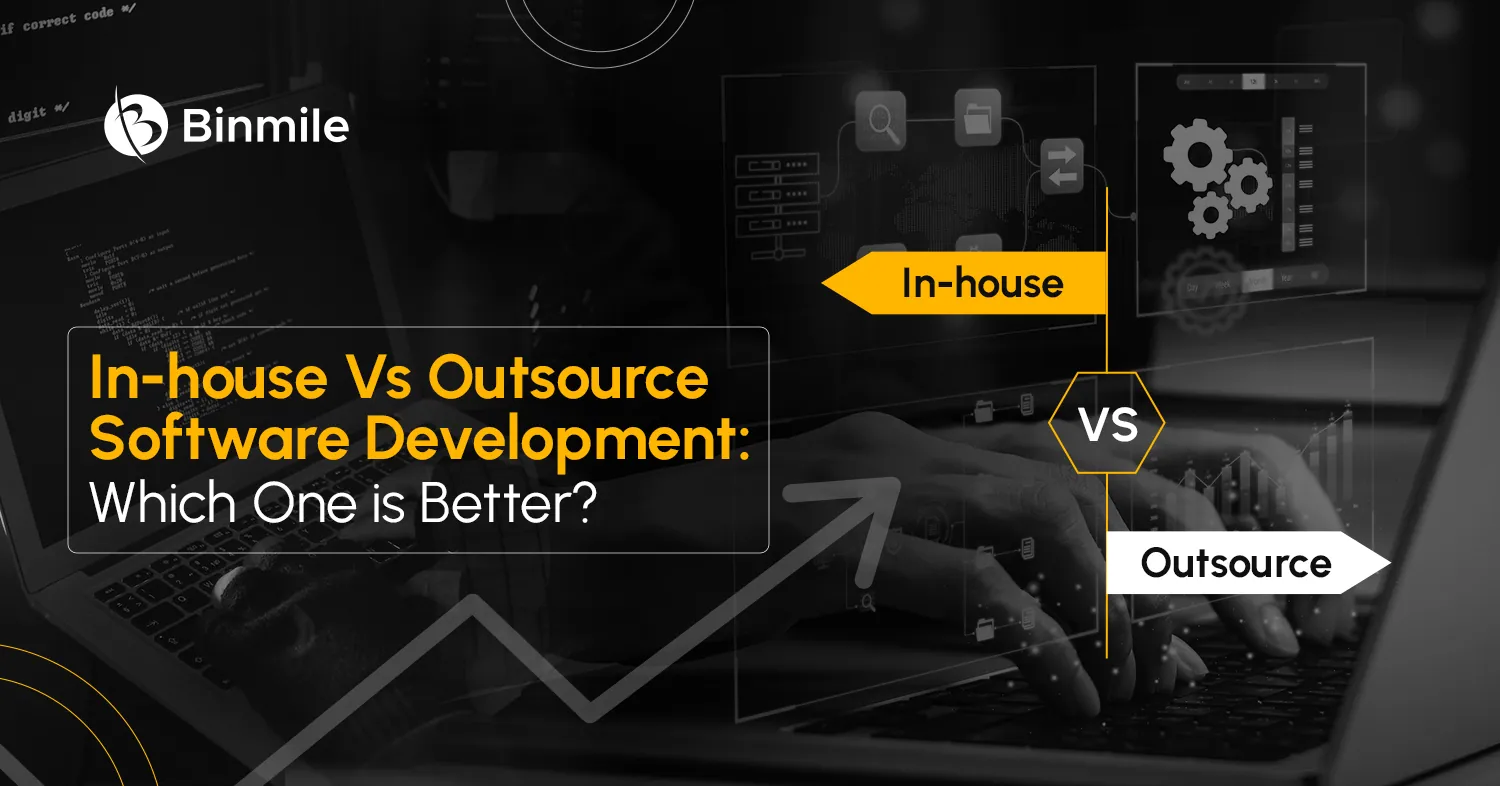Even the best companies sometimes make products that don’t work the way they should. But the question comes up: Why do so many new products from companies fail? It’s important to remember that these failures are often caused not by mistakes in tactics but by errors in strategy. Even the best ideas will fail if they don’t have a well-thought-out product plan.
Product failure should be avoided at all costs because it could cause a company to lose a lot of money and hurt its image. To reduce these risks and increase the chance of success, businesses must put idea evaluation at the top of their list throughout the software product development process.
By using expert criteria for idea validation, businesses can make sure that their product validation process effectively meets the needs and wants of the target market. As a result, this makes it much more likely that good things will happen. In this blog, we’ll talk in-depth about the most important parts of idea validation and show how they play a key role in keeping products from failing.
Understanding Idea Validation
Meanwhile, before delving into the criteria, it’s essential to get the concept of idea validation. Idea validation is assessing the feasibility, viability, and desirability of a product idea. It involves gathering feedback, conducting research, and analyzing data to validate assumptions and make informed decisions.
Common Causes of Product Failure
Many products fail due to a lack of proper validation. Moreover, without understanding the market, target audience, or competition, companies risk investing resources in ideas that may not resonate with customers. Several notable examples serve as cautionary tales, emphasizing the importance of idea validation in avoiding costly failures.

Expert Criteria for Effective Idea Validation to Prevent Product Failure
- Defining Your Target Market: To test an idea, it’s important to know who your target market is and what they want. First, figure out who your possible customers are, what they want, and what they need. Subsequently, this knowledge will help you decide what to do with your product development and how to make your solution fit their needs.
- Conducting Market Research: Validating product ideas requires a lot of market study. Start by identifying business trends. Also, look at how your customers act and figure out how big your target market is and how much it can grow. Use surveys, focus groups, and interviews to get useful information that will help you figure out how to market your goods.
- Analyzing Competition: Competition analysis provides valuable context for idea validation. In this case, begin by identifying your direct and indirect competitors. With this in mind, understand their strengths and weaknesses and identify gaps in the market. In effect, this information will help you differentiate your product and position it effectively.
- Assessing Technical Feasibility: While an idea may be compelling, it is important to evaluate its technical feasibility. Firstly, assess whether the required technology, skills, and resources are available or can be acquired within the desired timeframe. Under those circumstances, addressing technical feasibility early on can prevent costly roadblocks down the line.
- Evaluating Financial Viability: Before proceeding with an idea, evaluate its financial viability. Conduct a cost analysis and estimate potential revenue streams. Additionally, calculate the return on investment (ROI). To point out, understanding the financial implications helps determine whether the idea is financially sustainable and aligns with the company’s goals.
- Considering Legal and Regulatory Factors: In the first place, ensure your product validation process complies with legal and regulatory requirements. Investigate any intellectual property issues, licensing needs, or industry-specific regulations. After all, failure to address legal and regulatory factors can lead to delays, lawsuits, and even product recalls.
Here are a few case studies that demonstrate the importance of the criteria mentioned for effective idea validation.
Google’s Self-Driving Car Project
When Google started developing self-driving cars, it had to consider various legal and regulatory factors. They worked closely with policymakers and transportation authorities to address safety concerns, liability issues, and regulatory compliance. By proactively addressing legal and regulatory factors, Google ensured that their self-driving cars could operate within the bounds of the law and paved the way for the future of autonomous vehicles.
Tesla
Tesla, the electric vehicle manufacturer, underwent a rigorous financial evaluation to validate their idea of creating high-quality electric cars. They calculated the cost of production, estimated potential revenue streams, and considered the return on investment. By carefully evaluating the financial viability of its idea, Tesla made strategic decisions regarding pricing, manufacturing, and market entry, leading to their success in the electric vehicle industry.
Uber vs. Lyft
Uber and Lyft are two ride-hailing companies that operate in a highly competitive market. However, both companies conduct thorough competitor analyses to gain a competitive edge. For example, when Uber noticed that Lyft was gaining traction by positioning itself as a friendlier and more community-oriented service, Uber launched initiatives to improve their driver-customer relationships. Nonetheless, analyzing the strengths and weaknesses of their competitors allowed both Uber and Lyft to differentiate their services and stay competitive in the market.
Prevent Product Failure Via Effective Strategies for Idea Validation
- Building a Prototype or Minimum Viable Product (MVP): Building a prototype or an MVP allows you to test your idea in a real-world setting. However, it helps validate assumptions, gather user feedback, and identify areas for improvement. By involving potential customers early on, you can refine your product and increase its chances of success.
- Collecting and Analyzing User Feedback: Actively seek feedback from your target audience throughout the development process. Correspondingly, utilize surveys, usability tests, and user interviews to gather qualitative and quantitative data. Likewise, analyze this feedback to identify patterns, uncover pain points, and make data-driven decisions.
- Iterating and Refining Your Idea: Iteration is a very important part of validating an idea. Make changes to your product based on what users say and what you learn about the market. Adopt an agile mindset and be ready to make changes that will make your product more desirable and useful.
- Seeking Expert Advice and Validation: Engaging with experts and seeking external validation can provide invaluable guidance. Consider assembling an advisory board or consulting with industry professionals who can offer insights and expertise. Above all, a piece of expert advice can help validate your ideas and provide a fresh perspective.
Avoiding Pitfalls to Prevent Product Failure in Idea Validation
- Over-reliance on Confirmation Bias: Confirmation bias occurs when we seek or interpret information that supports our existing beliefs. It can hinder objective idea validation. With this in mind, be aware of confirmation bias and actively seek out diverse opinions and contradictory evidence.
- Ignoring Negative Feedback: Negative comments can be discouraging, but they can also be a good way to learn something new. Accept helpful criticism and use it to make your work better. If you don’t pay attention to negative feedback, you might miss things that need to be fixed.
- Inadequate Validation Methods: When it comes to evaluating your product, it’s crucial to avoid selecting the wrong evaluation methods, as they can result in inaccurate or insufficient insights. To ensure accurate assessments, it is important to carefully choose the right methods, taking into consideration factors such as the target audience, the market segment, and the available resources. In most cases, the optimal outcomes are achieved by employing a combination of qualitative and quantitative methods.
- Skipping the Validation Process: Despite the pressure to develop products quickly, businesses can be tempted to skip or hurry through the approval process. However, taking this shortcut often leads to serious mistakes or the production of goods that don’t fit together right. Therefore, it is essential to convey to everyone involved the importance of confirmation and allocate ample time and financial resources to the process.
Example 1
Consider a mobile application development company that is in the process of developing a new mobile application for financial management. Unfortunately, during the idea validation process, they fall victim to confirmation bias. They already hold a preconceived notion that their target audience primarily consists of tech-savvy individuals.
Consequently, their focus is solely directed toward gathering feedback and opinions from tech enthusiasts. Regrettably, this narrow approach inadvertently excludes potential users with different preferences and needs.
By relying solely on confirming their initial beliefs, the team overlooks valuable insights from a broader user base. This leads to a missed opportunity for crucial feedback and a failure to address the diverse requirements of the target market. Consequently, both the startup’s idea validation framework and the final product fail to resonate with the intended audience. This poses a significant risk of potential product failure.
Example 2
While validating their wearable fitness device idea, a product development company falls into the trap of relying solely on surveys and online questionnaires for user feedback. While surveys can provide valuable insights, they have limitations in capturing the complete user experience or uncovering unmet needs.
Consequently, important nuances and critical pain points may go unnoticed, leading to a product that lacks the desired functionality and fails to deliver a seamless user experience. This inadequate validation method increases the risk of product failure. The startup must broaden its validation approach beyond surveys to avoid these pitfalls. Qualitative methods, such as user interviews or observational studies, are essential for obtaining comprehensive insights.
Doing so allows them to delve deeper into the users’ perspectives, understand their preferences, and identify any unaddressed pain points. This richer understanding of the user experience enables the startup to make informed decisions and make necessary improvements to their wearable fitness device.
The Bottom Line
Taking a structured method of idea validation is important if you don’t want your product to fail. By carefully following expert criteria, like identifying the target market, doing thorough research, and figuring out if the idea is technically and financially possible, businesses can reduce the risk of failure by a large amount. Also, getting feedback from experts and users helps gather useful information and improve the idea.
Additionally, businesses have a better chance of making people’s desired products by avoiding common mistakes like confirmation bias and using strong validation methods. Companies can encourage creativity and build a solid foundation for their product’s success by constantly validating ideas.
As an experienced software product development company, Binmile focuses on your real business needs, validates hypotheses faster, reduces risks, and constantly improves processes to create a product development life cycle that works very well. If you want to connect, reach out at business@binmile.com today!






